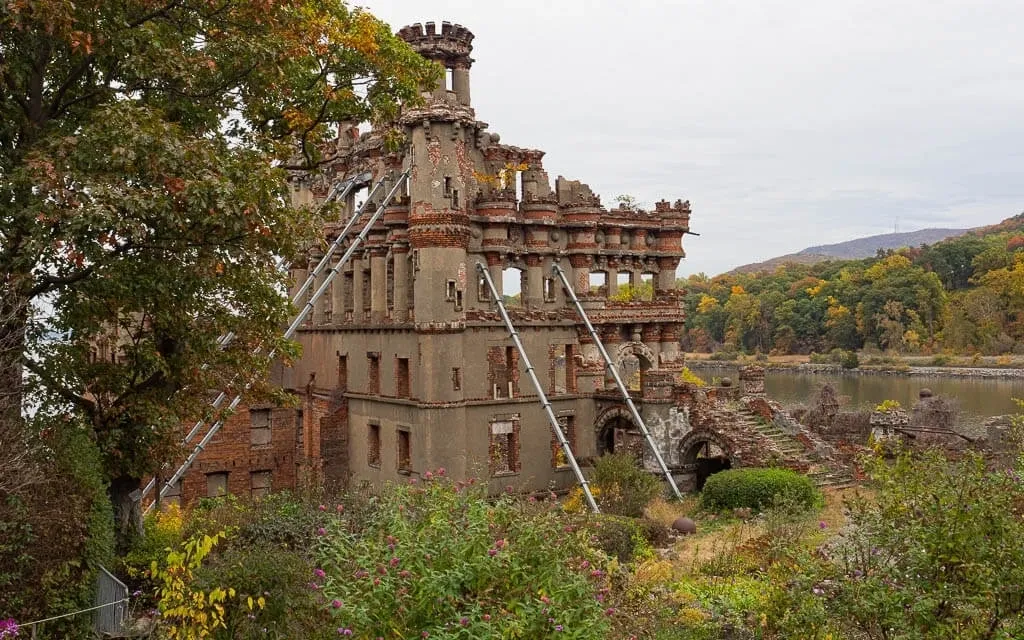Have you ever noticed that castle out in the water around 50 miles north of New York City? That’s Bannerman Castle. Once just a forgotten arsenal, it’s now a hotspot for adventurers. Situated on Pollepel Island, this castle dates back to the early 20th century. Sadly, it fell into ruins after a fire in 1969. But thanks to a resident of Beacon, NY in 1992, the Bannerman Castle Trust was established, bringing stability and opening it up for tours.
When it comes to talking about arms and ammunition in New York City, places like Central Park’s Arsenal or the Park Avenue Armory often come to mind. Well, Bannerman Castle is part of that conversation too. It’s currently owned by the state of New York and got its name from Francis Bannerman, a Scottish arms dealer who grew up in Brooklyn. He bought the island in 1900 and started building the castle there the following year.

After the Civil War, Bannerman jumped into the military surplus business while still a teenager. His company, famously known as Bannerman’s, quickly rose to the top as the world’s largest buyer of surplus military goods. Setting up a grand showroom on Broadway and Broome Street, he catered to volunteers during the Spanish American War. This war turned out to be a major opportunity for Bannerman, as he acquired a whopping 90 percent of all Spanish arms captured. With such a massive collection, he needed a secure location away from the city to store it all. Pollepel Island was the perfect choice because of its remote and uninhabited nature, plus its eerie reputation as a haunted place, which had kept it largely untouched since Native Americans in the Hudson Valley avoided it.
Interestingly, Bannerman’s arms store wasn’t the first time the island had dealt with military materials. During the American Revolution, the continental army had strategically placed iron-tipped logs around the island in an attempt to damage the British fleet, although this tactic ultimately didn’t work out as planned.

When Bannerman bought the island in 1900, he set out to create his own unique arsenal and storehouse, drawing inspiration from the grand castles he’d seen during his travels in Scotland. His plan was ambitious, envisioning a complex of structures including an arsenal, storerooms, and even a summer house complete with docks, turrets, and a moat. Bannerman didn’t just leave it at that – he personally oversaw the landscaping of the grounds, ensuring that his vision was brought to life in every detail.


The castle, proudly bearing Bannerman’s name, served as a prominent advertisement for his thriving business. His surplus inventory was so vast that during World War I, he provided cannons, uniforms, and blankets to the U.S. government.
Even as construction of the castle progressed during the war, it remained unfinished when Bannerman passed away in 1918. In 1920, a tragic event underscored the wisdom of locating the complex on a deserted island: the powder house exploded. This devastating blast, fueled by 200 tons of shells and powder, inflicted damage on the castle’s structure. Bannerman’s family continued to live on the island until around 1930, after which the castle fell into neglect and disrepair. Then, in 1969, another fire, suspected to be arson, left the castle in ruins.



For many years, Bannerman stood as one of New York’s most intriguing abandoned sites, drawing in urban explorers and fans of architectural decay, even though it was off-limits to the public. However, since 1992, the island has opened up for tours. Neil Caplan, a Beacon resident, founded the Bannerman Castle Trust that year and successfully raised over a million dollars to stabilize the structure and preserve the island.
While the island itself remains uninhabited, save for a black rat snake named Frank, the Trust offers tours of the castle from May to October. These tours depart from either Newburgh or Beacon, with tickets priced at $40 for adults and $35 for children. Additionally, visitors can explore Bannerman through various kayak tours or a special Metro North package departing from Grand Central. Beyond tours, the Trust also hosts movie nights, lectures, special dinners, and theatrical performances near the castle, providing a variety of experiences for visitors to enjoy.

